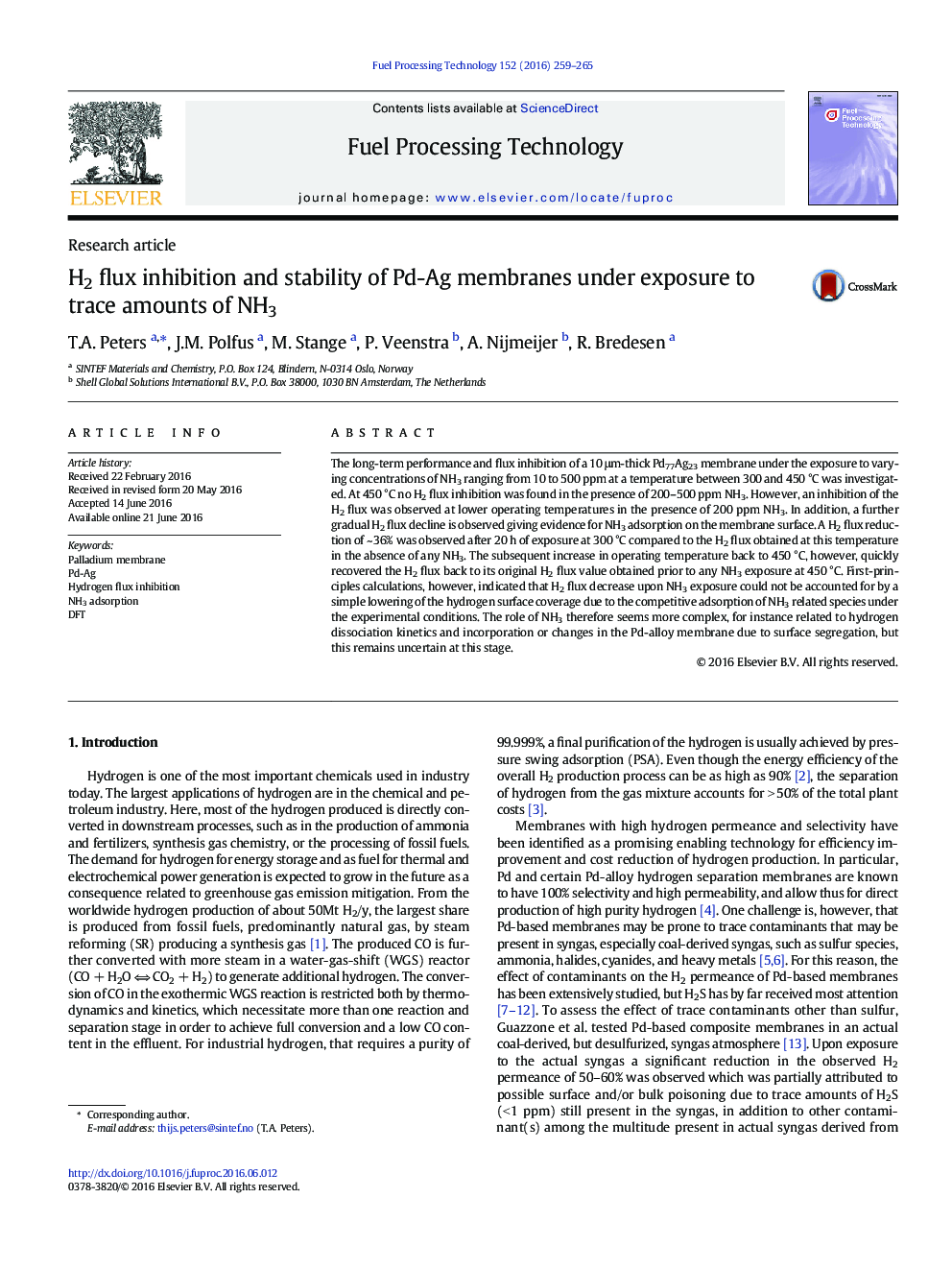| Article ID | Journal | Published Year | Pages | File Type |
|---|---|---|---|---|
| 209087 | Fuel Processing Technology | 2016 | 7 Pages |
•Pd-Ag alloy membrane films under exposure to trace amounts of NH3 are investigated.•A clear NH3-related H2 flux decrease is observed at operating temperatures < 450 °C.•A 36% H2 flux decrease is observed after 20 h of exposure to 200 ppm NH3 at 300 °C.•Full H2 flux recoveries are seen increasing the temperature back to 450 °C.
The long-term performance and flux inhibition of a 10 μm-thick Pd77Ag23 membrane under the exposure to varying concentrations of NH3 ranging from 10 to 500 ppm at a temperature between 300 and 450 °C was investigated. At 450 °C no H2 flux inhibition was found in the presence of 200–500 ppm NH3. However, an inhibition of the H2 flux was observed at lower operating temperatures in the presence of 200 ppm NH3. In addition, a further gradual H2 flux decline is observed giving evidence for NH3 adsorption on the membrane surface. A H2 flux reduction of ~ 36% was observed after 20 h of exposure at 300 °C compared to the H2 flux obtained at this temperature in the absence of any NH3. The subsequent increase in operating temperature back to 450 °C, however, quickly recovered the H2 flux back to its original H2 flux value obtained prior to any NH3 exposure at 450 °C. First-principles calculations, however, indicated that H2 flux decrease upon NH3 exposure could not be accounted for by a simple lowering of the hydrogen surface coverage due to the competitive adsorption of NH3 related species under the experimental conditions. The role of NH3 therefore seems more complex, for instance related to hydrogen dissociation kinetics and incorporation or changes in the Pd-alloy membrane due to surface segregation, but this remains uncertain at this stage.
